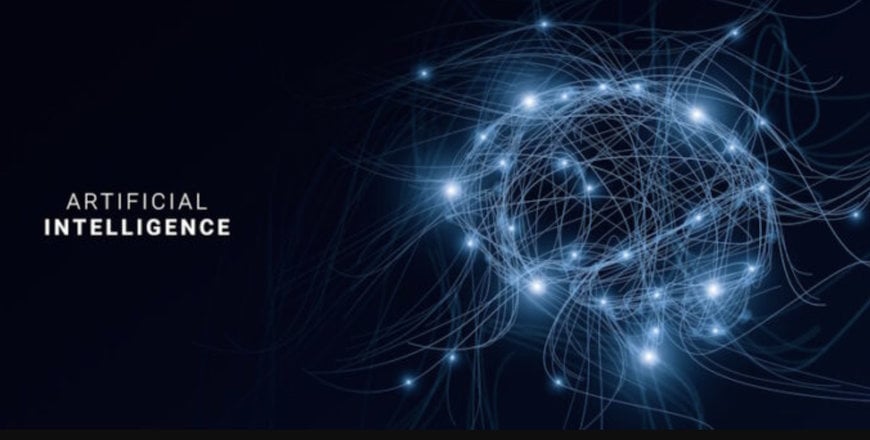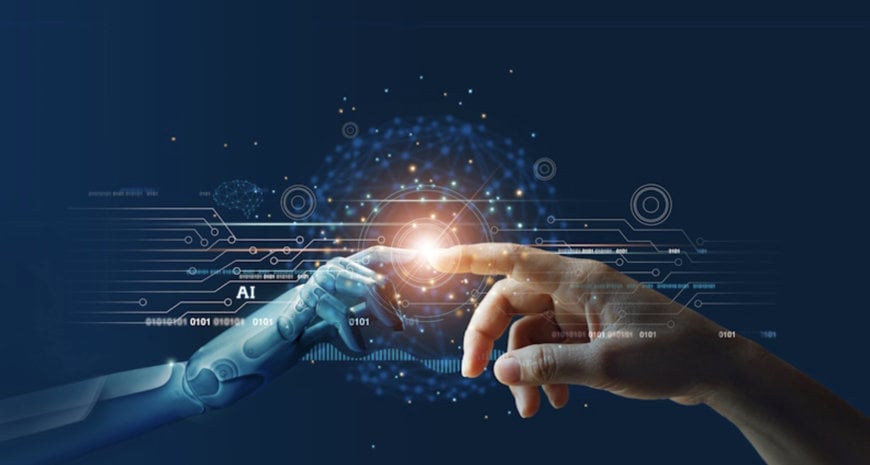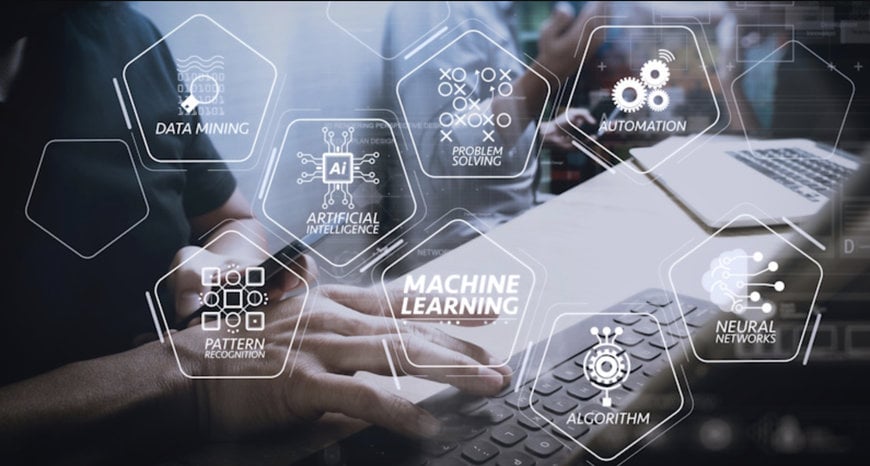www.ptreview.co.uk
05
'24
Written on Modified on
UNDERSTANDING HOW ARTIFICIAL INTELLIGENCE ‘THINKS’
Rene Cabos, Senior Product Manager AI, Hexagon Manufacturing Intelligence, explains how AI thinks and what its applications are in the manufacturing sector.
hexagon.com

A recent flurry of journalism has described artificial intelligence as one of the most misunderstood technologies in the world today. Movies and media often depict AI as human-like robots with emotion and self-awareness, capable of complex understanding. For AI to add true value, particularly in fields like advanced manufacturing, we must move past these misconceptions.
In this blog post, we take a look at demystifying artificial intelligence and ask ourselves what is the key to understanding how AI thinks and what are the applications in the manufacturing sector.
An AI analogy
Imagine a person born and growing up alone in a vast library. The doors are locked. This person lives in isolation, with just the books to keep them company. As this person lives their life, they look at the books. They learn the shapes and patterns of language. Because they’ve never been outside, never seen the world in all its magnificent diversity, they can’t put any meaning to the words and phrases they see written.
There is neither “signifier” nor “signified”, just patterns on a page. If we take a technical definition, in this context it’s not even language at all.
After 10 or 20 years isolated in this library, someone slips a note under the door. There is a question written on a piece of paper. “What colour is a ripe banana?” This person has never seen a banana. They don’t know the meaning of the word “colour”. They don’t even understand the concept of a question. There is no possible way for this person to interpret the request but they have seen these words before. They recognise the shapes. When they’ve seen these words together in the past “banana” “ripe” “colour”, there is always another word that comes up… “yellow”.
That’s a fascinating analogy for understanding large language models like Chat GPT. In that sense, it’s very useful, but in another it’s problematic.

The problem with projecting human characteristics on AI
The majority of people, non-experts, are unequipped to talk about artificial intelligence except in anthropomorphic terms. We ordinary humans suffer from the opposite problem to the poor lonely individual in the analogy. The language we use is so full of shades of meaning and connotations, it’s almost loaded against us.
In manufacturing, we talk about machine learning, neural networks, AI vision, knowledge and understanding. All are human characteristics which we project onto machines because it makes the complex ideas easier to understand and describe.
Look at the AI characters in popular culture and you’ll see the problem goes even deeper. AI is depicted in films and books in a human-like way, with recognisable faces, having emotions, forming friendships. Even the famous Turing Test was all about impersonating humanity.
This makes AI more approachable, more usable, but it comes at a risk. It creates a misconception about what AI really is and how it works.

A framework for understanding how artificial intelligence thinks
At the heart of successfully implementing AI is the need to understand the problem you’re trying to solve. Many people go wrong because they start with an AI solution then they go in search of the problem. That’s the wrong way around.
You have to make sure you properly understand what’s happening, and the context around the problem before you can find a satisfactory solution. An AI model is only trained on the information it receives. If there is a problem with the input it can easily lead to mistakes.
Imagine if you trained an AI model to predict weather patterns based on a humidity sensor on the ground in front of your house. An error would occur every time your neighbour washes his car and the water runs over the sensor. Understanding how artificial intelligence thinks means recognising that an AI system can’t see the bigger picture. It can’t make inferences in the same way that human beings can.
Data Quality
AI models heavily depend on the data they are trained on. High-quality, diverse, and representative data is essential to ensure that the model can generalise well to different situations – training data should accurately represent real-world scenarios to ensure sound predictions.
Data Quantity
Having enough data is also crucial. Larger datasets often contribute to better model performance, enabling the AI system to learn more nuanced patterns and improve accuracy. It needs to be stressed that, without readily available data, an AI programme is starved of its key resource.

Artificial intelligence is a pattern finder, not a problem solver
AI is not a problem solver in a traditional sense. This misconception also stems from projecting human traits onto artificial intelligence. Problem solving, reasoning and weighing up solutions are functions of human intelligence. Reasoning implies thinking, inferring, deducing and making decisions based on logic.
Professor Bjørnar Tessem at the University of Bergen puts it like this: AI doesn’t ‘think’, it computes. AI works according to specific rules, calculations and codes written by programmers. It operates on the principles of detecting patterns and applying them to make statistically likely predictions. It has no capacity to interpret the core problem and that’s where human intervention is required.
The key to success with artificial intelligence is understanding its strengths and limitations. We must integrate these insights into our own problem-solving capabilities ensuring that human judgement and critical thinking remain in ultimate control.
Achieving AI success in manufacturing
Many companies have begun the journey towards implementing AI in their manufacturing operations. The most common areas for quick wins here are likely to be:
- Predictive maintenance
- Quality assurance
- Supply chain optimisation
- Safety monitoring
By searching for patterns in vast amount of operational data, AI can help manufacturers make predictions that enable them to take a proactive approach in managing their operations in a more effective way. AI can spot patterns and anomalies that would be difficult or impossible to spot manually.
This is a feature of AI is useful across many manufacturing operations, from goods inwards to the end user.
Leveraging this predictive power, manufacturers can anticipate issues before they occur, respond quickly to market changes, ensure product quality and create safer work environments.
This is a feature of AI is useful across many manufacturing operations, from goods inwards to the end user.
Leveraging this predictive power, manufacturers can anticipate issues before they occur, respond quickly to market changes, ensure product quality and create safer work environments.

